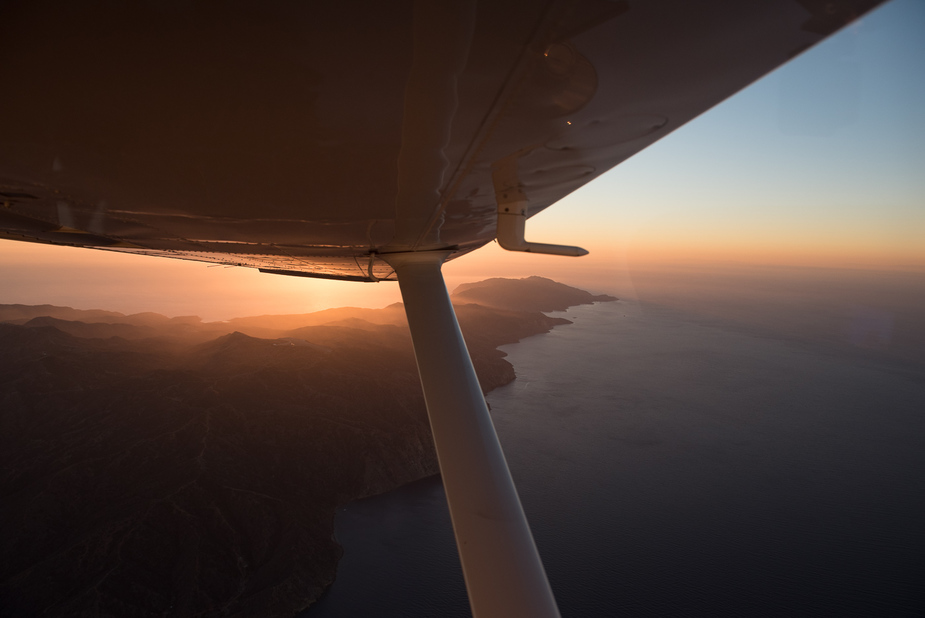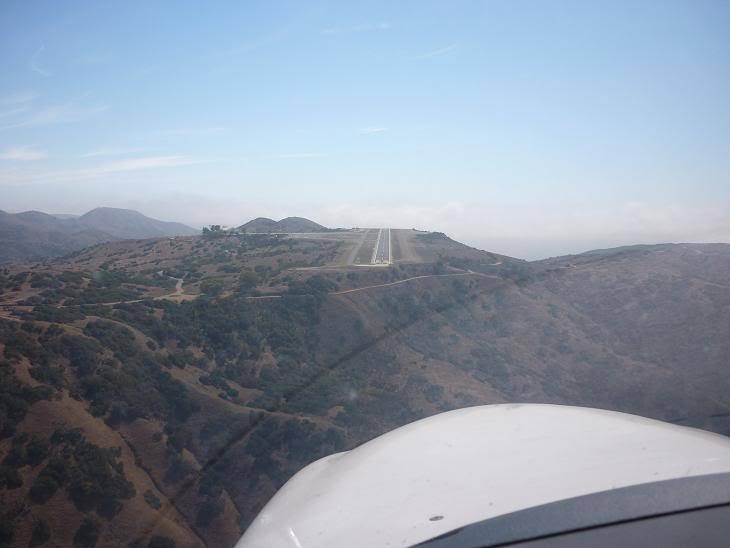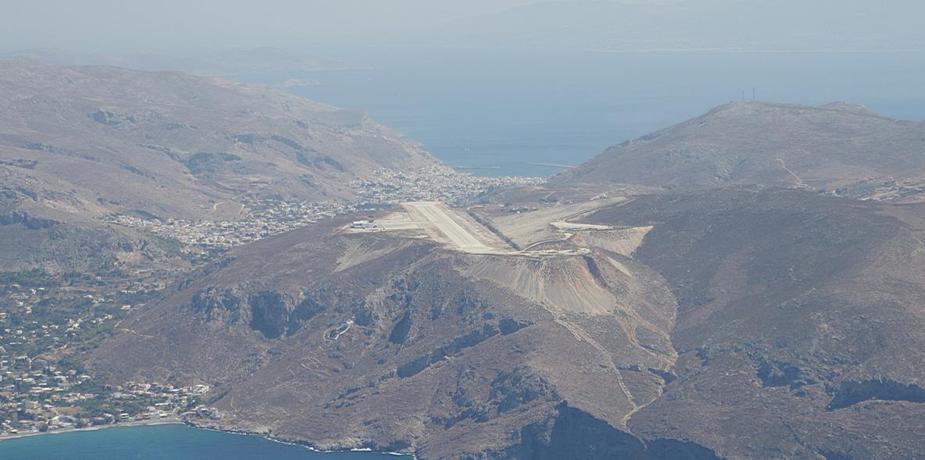And while I don’t have a pic or video of the airport (I’ll do one next time), here’s a pic of the island on the flight home:

This is what the approach on 22 looks like – taken in a DA40 a few years ago.

Very impressive. Note to self. Do not undershoot…….
Maybe they have dodgy winds but you should always maintain the “glideslope” otherwise there are many airports you will never be able to fly into – example (Kalymnos):

Well. in the above cases, one ought to be well above a normal “glidelsope” in order stay out of the lee.
In other cases (short runways), one must obviously “duck under” the normal glideslope in order to land on the numbers.
one must obviously “duck under” the normal glideslope in order to land on the numbers.
Why would one do that?
?
… Because a normal landing on a long runway is always made with more safety margin, i.e. crossing the threshold at a comfortable height and at normal speed. Landings on really short runways require different technique, otherwise you can’t land on the numbers. Haven’t you landed at Wangen-Lachen once?
Landings on really short runways require different technique, otherwise you can’t land on the numbers. Haven’t you landed at Wangen-Lachen once?
Yes, but I don’t have an issue with flying say a 5 degree “glideslope” and aiming right at the numbers and achieving the right speed during the flare.
Provided you are at the right speed during the flare, the angle at which you flew the final approach doesn’t matter.
It takes a lot of concentration and normally one doesn’t bother, but there is nothing inherently hard about it. Flying the approach below the “glideslope” doesn’t help in a way I can see and exposes you more to the various other risks – wind shear, loss of power, obstacles.
Provided you are at the right speed during the flare, the angle at which you flew the final approach doesn’t matter.
True of course, but height over the thresold is the second important element. When you said “glideslope”, I picked up that you also intended "to cross the threshold at “normal” height".
I don’t think that a 3 degree “glideslope” is ever excessive because, in any short-field scenario where you are aiming for the numbers rather than 1/3 down the runway, the height above the threshold will be really minimal and often below the height of a 1m high perimeter fence when you have the gear down 
And the risks of flying a low approach are really high…
Disclaimer: I have never done any “bush flying”; stuff like Wangen Lachen is dead easy.